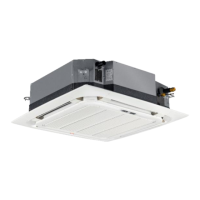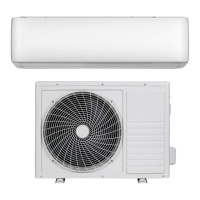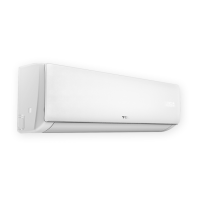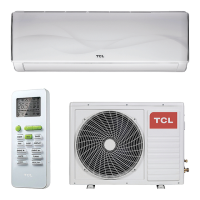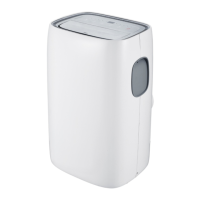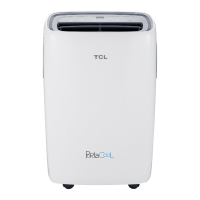AIR PURGING WITH VACUUM PUMP
Please note this should be completed for each refrigerant
circuit (each indoor unit)
1. Check that pipelines connection have been properly
connected, remove the charging port cap, and connect the
manifold gauge and the vacuum pump to the charging
valve using service hoses as shown
2. Open the valve on the low-pressure side of the manifold
gauge, then run the vacuum pump. Vacuum the indoor unit
and the connecting pipes until the pressure in them lowers
to below 1.5mmHG (The operation time for vacuuming is
about 10 minutes). When the desired vacuum is reached,
close the low pressure valve on the manifold and stop the
vacuum pump.
3. Disconnect the service hoses and fit the cap to the
charging valve.
4. Remove the blank caps, and fully opens the spindles of the
2-way and 3-ways valves with a service valve wrench.
5. Tighten the blank caps of the 2-way and 3-ways valves,
applying the torque listed in the table above.
ADDING REFRIGERANT
Refrigerant must be added if the pipe length is more than 5 metres (16'5"). This
operation can only be performed by a professional F-Gas engineer, for the additional
gas amount, see the below
GAS LEAKAGE INSPECTION
After the pipeline connection is done, use a leakage inspection device to carefully check
if there is any leakage at the joints. This is an important step to ensure the quality of
installation. Once a leak is detected, proper action should be taken immediately.
INSTALL THE WATER DRAINAGE PIPE
1. For good drainage, the drain
hose should be angled
downwards.
2. Do not pull on or bend the drain
hose or flood its end with water.
3. When the long drainage hose
passes through indoor areas, it
should be wrapped in insulation.
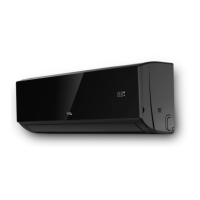
